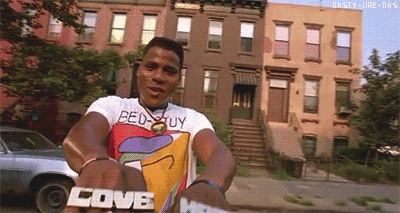Top 11-20 Double Features
-
Bicycle Thieves (1948), Man with a Movie Camera (1929)More: Bicycle Thieves: A Passionate Commitment to the Real, Dziga Vertov: The Man with The Movie Camera and Other Newly-Restored Works


-
The Noir Codex: The Third Man (1949), Unforgiven (1992)More: The 5 Essential Rules of Film Noir, Carol Reed’s ‘The Third Man’: How Orson Welles Stole a Show He Was Barely In, The Third Man: The One and Only…, Martin Scorsese on ‘The Third Man’: The best revelation in all cinema, Rethinking the Movie Masterpieces: Richard Corliss Expands TIME’s List of Cinematic Greats, The Greatest Crime Film of All-Time: The Third Man, ‘Unforgiven’: Clint Eastwood’s Eulogy for the Man with No Name in His Anti-Western Masterpiece


-
Slinkily Disorientating: Persona (1966), The Wizard of Oz (1939), Sunset Boulevard (1950), Mulholland Drive (2001)More: Counting Down the Greatest Crime Films of All-Time: #15 Sunset Boulevard (1950), Mulholland Drive: How Lynch Manipulates You, 25 Great Movies With The Most Effective Uses Of Voice-Over Narration, 33 Essential Neo-Noirs, From Jackie Brown to Gone Girl




-
Blessed Journey: Malcolm X (1993), Baraka (1992)


-
Going Home: The Ballad of Buster Scruggs (2018), The Tale of Princess Kaguya (2013)You “cannot play another man’s hand”. More: Isao Takahata and His Tale of Princess Kaguya (2014), Glenn Kenny/Roger Ebert on The Ballad of Buster Scruggs, The Tale of the Princess Kaguya is the most gorgeous film you’ll see all year


-
Ghosts Don’t Cry: Vertigo (1958), Don’t Look Now (1973), Volver (2006)More: Counting Down the Greatest Crime Films of All-Time: # 23 Vertigo (1958), Hitchcock’s ‘Vertigo’: The Unrelenting Male Gaze that Blurs the Lines Between Possession and Obsession, Joachim Trier Grapples with the Fractured Time of Don’t Look Now, Don’t Look Now: A Vision of Hell and High Water, Don’t Look Now: Inspirations, Roger Ebert on Volver, Alfred Hitchcock Wiki, 1000 Frames of Hitchcock



-
Who Am I?: I Am Cuba (1964), Ghost in the Shell (1995)


-
Hunter, Prey: M (1931), Berlin: Symphony of a Great City (1927)More: The Mark of M, My Film M: A Factual Report, Mastering a New Medium—Sound in M, The Golden Age of Berlin Comes to Life in the Classic, Avant-Garde Film, Berlin: Symphony of a Metropolis (1927), Tunnel Vision: The Hidden City and City Symphonies


-
Visualizing Compassion: La Strada (1954), Wings of Desire (1987)


-
Liberties Taken: Lawrence of Arabia (1962), Aguirre, the Wrath of God (1972), Solar Walk (2017)Cinema is abstract and experimental by nature. The “true” stories at the core of Aguirre and Lawrence are minor conveniences, used only when productive. The actual true story, of all three films, is scale. It’s the concern of self-proclaimed gods with existence, of characters trying to sculpt the rules and boundaries of the universe, always in the end finding themselves smaller than they either suspected or hoped, and of directors trying to manifest a vision. From Lean’s massive production to Herzog’s shoestring epic to Bucsi’s humble exploration, all guided primarily by emotion, aesthetics, and charismatic leadership of teams, the construction of these films is equivalently heroic. More: Réka Bucsi Talks ‘Solar Walk’



